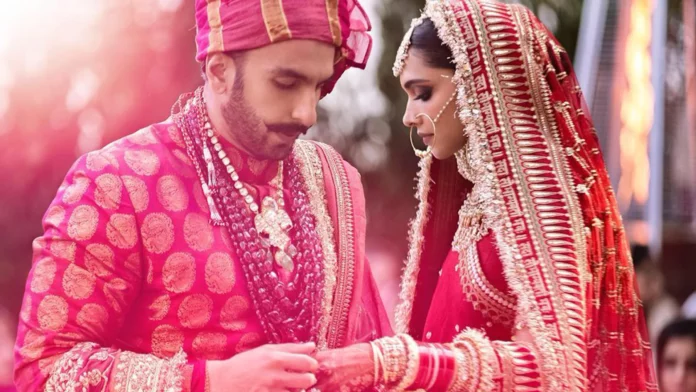Ever wondered what star weddings such as those of Ranveer Singh and Kiara Advani must be like? Here’s a take on vibrant and euphoric Sindhi weddings.
Rooting from the Sindh region in Pakistan, Sindhis relish their traditions, humbly embedded in their Hindi-Sufi customs and rituals. They are highly religious, evident at the time of their wedding, from marrying on Satyanarayana Chandsi or the new moon, praying to their deity and reaching back to ancestors for blessings.
Pre-Wedding Rituals
Kachhi Misri
Misri is a natural sweetener — a symbol of sweetness in our relationships and a significant element of Sindhi customs. Kachhi misri or roka is a private ceremony where the bride and groom’s families meet and exchange gifts to finalise the match. For good luck, the boy and girl are given coconuts and lumps of misri. Later, the bride is covered in a red drape and has five various kinds of fruits placed on her lap by the groom’s sister.
Pakki Misri
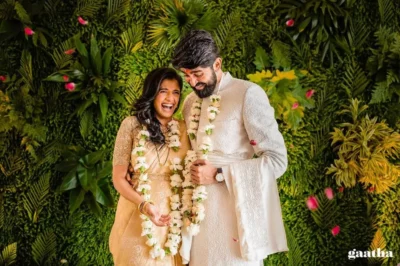
Usually held a week before the wedding day, pakki misri, akin to sagai, is a formal engagement. Here the soon-to-be bride and groom exchange wedding bands while the families exchange grand favours, including jewellery, money and sweet platters. The bride’s parents provide a traditional dupatta ki saree placed on the groom’s head by the priest during the ceremony. The girl wears this saree after the wedding.
Dev Bithana and Grahi Puja
This ritual is conducted separately in the homes of the engaged couple. A stone grinder is installed by the priest and considered a deity. Seven married women worship this idol as oil is poured over the heads of both the boy and the girl before they are washed off in a purifying bath during the grahi pooja. It is followed by the dev bithana ceremony in which the women of both houses use the grinder to ground wheat as a sign of prosperity. The future groom offers a handful of grains to the priest, pledging to serve the lesser fortunate. Later, the mothers of the engaged couple bring an earthen pot filled with water from the temple back to their homes, where the sons-in-law of each family cut the water to fend off evil spirits. After that, the bride and groom are presented with the cover of the earthen pot. Successful breaking of the pot in one motion is deemed auspicious.
Berana Satsang
Berana satsang is a meeting in which the whole family gathers and prays to the Almighty Jhulelal, pleading with him to bless the couple and the events of the entire wedding process. The satsang also consists of the traditional songs of Sindhis called ladas. Sometimes a proper sangeet ceremony which enhances the festivity of the nuptials.
Jenya
A sacred thread known as janeu is wrapped around the boy’s body during the ceremony known as jenya, and the priest, known to Sindhis as maharaj, chants mantras and whispers his duties as a husband in his ears. The groom then performs three pheras by the fire then after.
Saagri
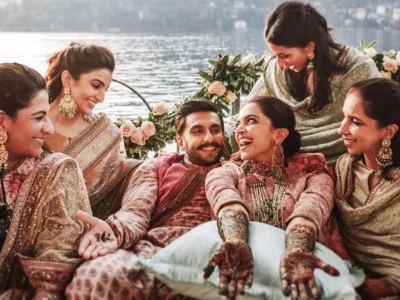
Saagri, commonly known as mehendi in North-Indian weddings, imparts luck, joy, and beauty to the bride. After celebrating the same ritual at his house, the groom later visits the girl’s home as the evening rolls on, accompanied by his sister and cousins, and presents her fiancée with jewellery made of mogra flowers while dousing her in rose petals.
Wedding Day Rituals
Haldi
Haldi is a ceremony in which a paste made of gram flour, sandalwood, cream and a pinch of turmeric is applied to the couple’s bodies to safeguard them from evils while cleansing their mind and spirit. Followed by a ceremonial bath, the groom’s clothes are torn by his family and friends, symbolising the completion of bachelorhood.
Garo Dhago
On the morning of the wedding, the priest performs the ritual known as garo dhago, in which he ties a red thread around the couple’s wrists and prays to invoke their respective ancestors to bless them for their new marriage.
Swaagatam
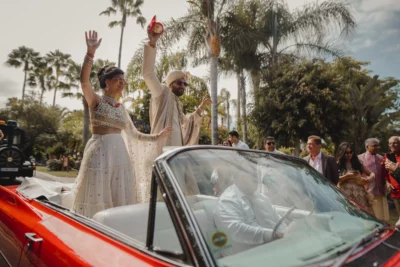
On the arrival of the baraat, the mother of the bride welcomes the groom with tilak and aarti. The guests are sprayed with rose water and are offered sugar and cardamom. The husband and bride are kept apart by a large dupatta or sheet, which prevents them from seeing one another. After performing the customary pooja, the sheet is lowered, allowing the couple to see one another finally.
Paon Dhulia
A beautiful blanket from the girl’s trousseau is used to cover the mandap, to be used by the couple later in their new lives. Once seated, the bride’s parents wash the groom’s feet, who is considered to be an embodiment of Lord Vishnu, with milk and water. The jaimala is the next event, during which the couple exchanges garlands.
Kanyadaan
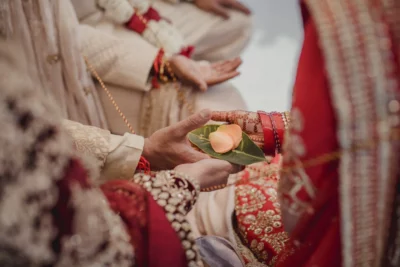
As the name suggests, during kanyadaan, the bride’s father asks the groom to accept his daughter as an equal partner by placing her right hand in his.
Palli Pallo and Hathiola
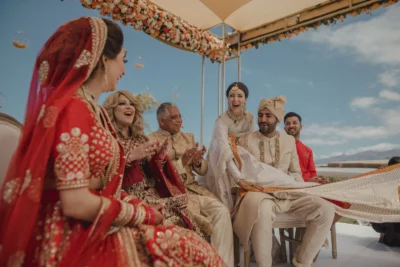
During this ritual, the ends of the bride and groom’s bridal dupattas are tied in a knot with a few grains of rice money bagged inside. Following this custom comes hathiola, in which the right hand of the bride and groom are tied using a red scarf until the couple prays to God.
Pheras and Saptapadi
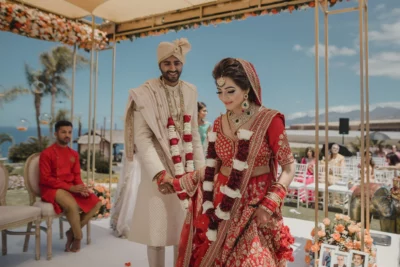
In a Sindhi wedding ceremony, there are four pheras; Dharma, Artha, Kama and Moksha. The first three pheras are led by the bride, and the last one by the groom. After the pheras, the bride has to walk on seven mini bags of rice placed in front of her with the help of her husband — representing the action of facing challenges in life together and starting down the path to their future.
Post-Wedding Rituals
Vidaai
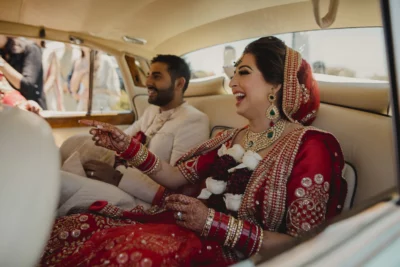
The bride says an emotional goodbye to her family and her parental home. Following the bride’s father’s gift of farewells, the couple depart for the groom’s home.
Datar
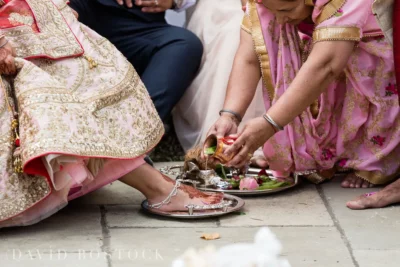
The bride is welcomed into her new house by her in-laws with a warm greeting, where her feet are washed before entering, and then she sprinkles milk around the house.
Salt Shagun
For this custom, the bride hands her husband a handful of salt, and he returns it to her without spilling it. This is done three times back and forth to signify that they are bound together by loyalty and honesty and would never breach their vows.
Sataurah
At an auspicious moment set by the priest in sataurah, the pair pays a visit to the bride’s house, where they are welcomed with a lavish feast and gifts.
Gadjani

Gadjani, comparable to a wedding reception, features a delicious Sindhi feast and allows the bride to meet her new family.





